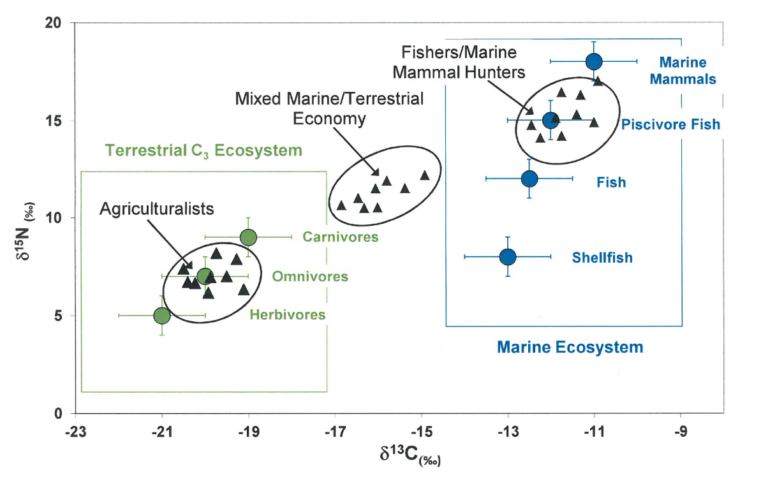Home / History / Ancient History / Archaeology: From Dig to Lab and Beyond / What is stable isotope analysis?

Reach your personal and professional goals
Unlock access to hundreds of expert online courses and degrees from top universities and educators to gain accredited qualifications and professional CV-building certificates.
Join over 18 million learners to launch, switch or build upon your career, all at your own pace, across a wide range of topic areas.

 Figure 1. Typical bone collagen stable isotope ratios for Northwest Europe, illustrating the principle of dietary reconstruction.
Figure 1. Typical bone collagen stable isotope ratios for Northwest Europe, illustrating the principle of dietary reconstruction.






